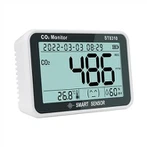How to Troubleshoot Coarse Focus Malfunctions in Olympus Microscopes
The main malfunction of microscope coarse adjustment is inconsistent tension during automatic sliding or lifting. Automatic downward movement refers to the phenomenon where the lens barrel, arm, or stage is stationary at a certain position, without adjustment, and slowly descends automatically under the weight of the Olympus microscope itself. The reason is that the gravity of the lens barrel, mirror arm, and stage itself is greater than the static friction force. The solution is to increase the static friction force to be greater than the gravity of the lens barrel or arm itself.
For the tilt tube of Olympus microscopes and the coarse adjustment mechanism of most binocular Olympus microscopes, when the mirror arm automatically slides down, you can use both hands to grip the stop pulley on the inside of the coarse adjustment handwheel and tighten it clockwise with both hands to stop the slide. If there is no effect, seek professional repair.
The automatic sliding of the Olympus microscope barrel is often mistaken for being caused by a loose fit between the gear and rack. So we added shims under the rack. In this way, although the downward movement of the microscope barrel can be temporarily stopped, it causes the gears and racks to be in an abnormal meshing state. The result of the movement is that both the gears and racks are deformed. Especially when not properly padded, the deformation of the rack is even more severe, resulting in some biting tightly and others biting loosely. Therefore, this method is not suitable for use.
Due to long-term disrepair, the coarse adjustment mechanism of Olympus microscope has dried up lubricating oil, which can cause uncomfortable feeling during lifting and even hear the friction sound of the parts. At this point, the mechanical device can be disassembled, cleaned, greased, and reassembled.






